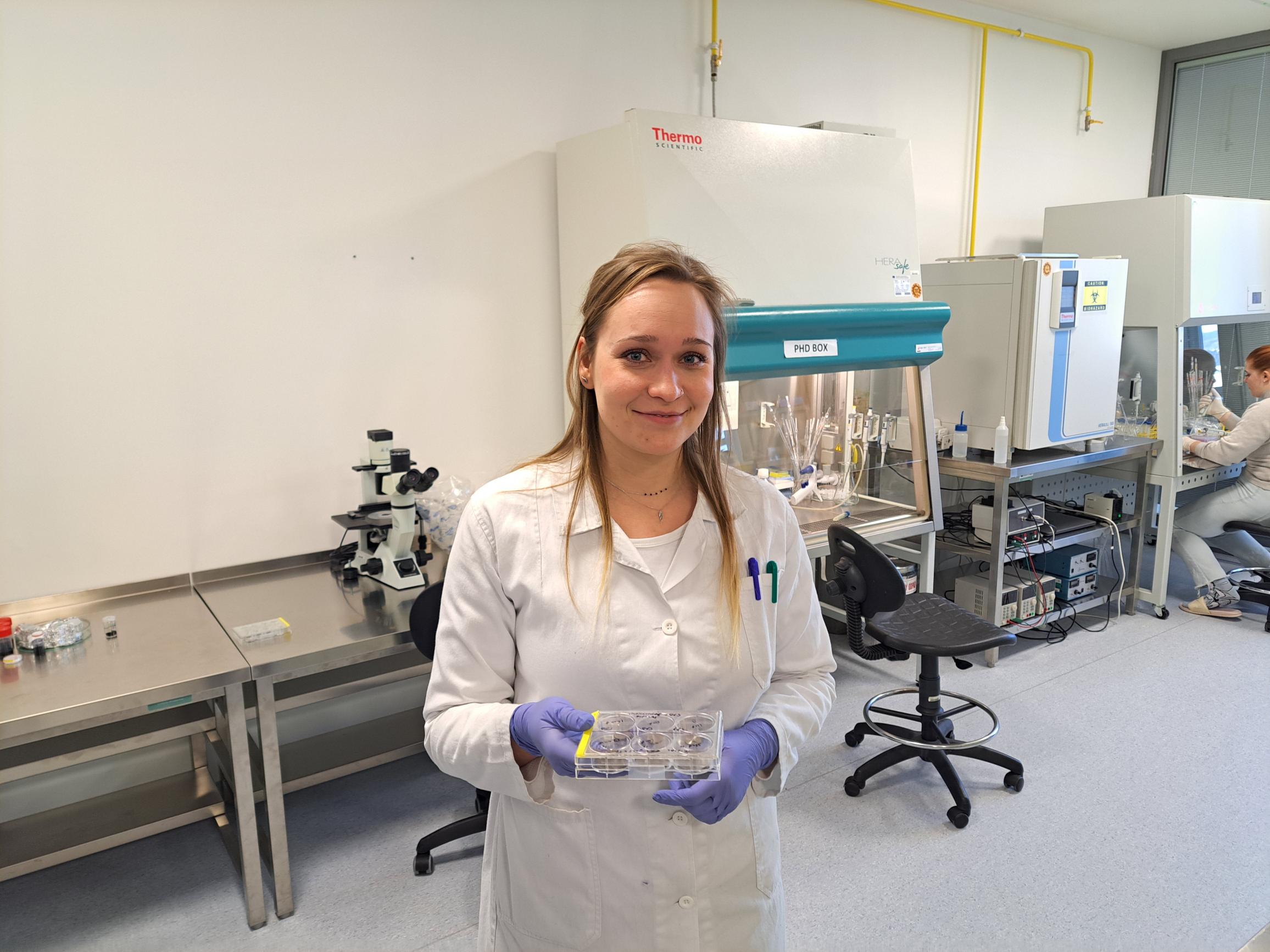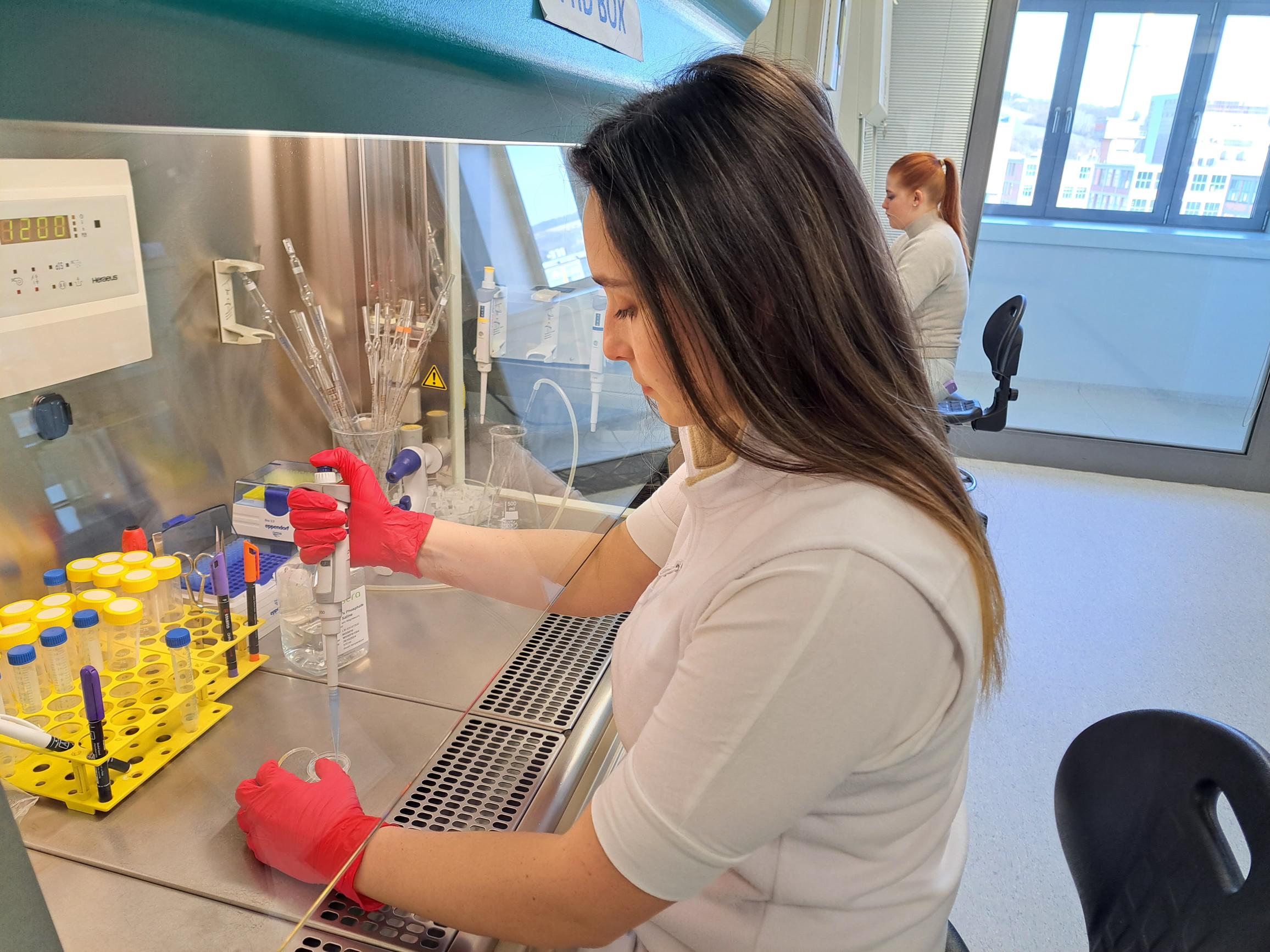Composite materials - A new route to multifunctional system for tissue engineering
Zlín, 10 March 2023 – Since the realization of the human body’s imperfection in regenerating damaged tissues, scientists have been working to find a way to compensate for this deficiency. Therefore, in addition to conventional treatments, the potential of replacing damaged tissue with synthetic constructs possessing biomimetic properties is being developed.
The concept of biomimetics, i.e., taking inspiration from nature and life systems and mimicking them with man-made engineering solutions, holds promise for the development of materials with unique properties. Collaboration between scientists from different disciplines, especially materials engineers and cell biologists, plays a key role. This was the composition of the team of the project funded by the Grant Agency of the Czech Republic (GA CR), which focused on research and a closer understanding of the relationship between biomaterials and stem cells.
Cells perceive a large number of external stimuli. The interplay and combination of these stimuli, together with the cell’s inner environment, then determine the behaviour of the cell. The cooperation of biomacromolecules forming the environment in tissues and cells has been set during the long evolutionary development of organisms and can therefore be considered the ‘gold standard’. “Logically, therefore, there is an opportunity to create the necessary synergy by using the same biomacromolecules in the preparation of ‘man-made’ tissue carriers. However, lessons from the field show that this is currently a technologically unattainable ‘holy grail’. Nonetheless, a suitable approach can lead to the creation of composite systems that combine natural biomacromolecules (bringing compatibility with the living system and some bioactive properties) with synthetic materials (bringing bioactivity, responsiveness to external stimuli and technological processability) and thus can get as close to this ‘holy grail’ as possible,” says team leader Professor Petr Humpolíček.
The project funded by GA CR and implemented by the research team of Tomas Bata University in Zlín and Masaryk University in Brno contributed to the solution of this challenge. The team was able to successfully combine biopolymers (e.g. sodium hyaluronate) with synthetic conductive polymers (polyaniline, polypyrrole) through the preparation of composite colloidal particles. “The prepared particles were not only miscible with other matrix biopolymers to form functional tissue carriers, but also exhibited antibacterial properties as an added value. However, their compatibility with human induced pluripotent cells, considered to be key models for biomedical applications, was a crucial fact,” explains Associate Professor Věra Kašpárková, a member of the research team. An article describing this system was published in the prestigious journal Carbohydrate Polymers in 2021, in part because its results demonstrated the ability of induced pluripotent cells to form beating heart cells on the materials described. Here, the typical property of composite systems containing electrically conductive polymers, i.e. conductivity, was exploited, since the potential use of such materials is primarily focused on the development of tissues sensitive to electrical stimuli, such as cardiac or nervous tissue.
In the course of the experiments, the team members encountered an interesting effect that is key when considering practical applications of one of the conducting polymers, polypyrrole. Polypyrrole is derived from the monomer pyrrole that is known to be a component of many pharmacologically active substances. It is a polymer showing very promising user properties, e.g. good electrical conductivity in physiological environments or a high degree of biocompatibility. The team demonstrated that the preparation of this polymer generates by-products that can promote neurogenesis in stem cells. It is therefore necessary to either take this effect into account when preparing composite materials containing polypyrrole or to ensure a high level of purity if neurogenesis is undesirable for the application.
Another of the critical properties defining the biological value of a material is the morphology and structuring of its surface, which influence and control the behaviour of cells on the material. Therefore, the team developed a process for preparing surfaces, structured in a targeted manner, based on commonly used plastic tissue material. It is a reproducible and controllable process leading to the formation of variable biomimetic structures, which can be subsequently modified, e.g. by plasma, by deposition of a conducting polymer film or by chemical modification with suitable functional groups. The project not only succeeded in preparing structured surfaces but also in demonstrating the cellular compatibility of the surfaces with stem cells. “An interesting effect observed on one type of surface was its ability to increase the intensity of the fluorescence signal, e.g. when measuring the response of heart cells. The structured surface, based on a common tissue plastic material, which amplifies fluorescence signals, may thus find interesting applications in practical studies that require sensitive measurements of cell behaviour,” says Dr. Pacherník, the project co-investigator who observed the effect.
The presented research funded by GA CR has an impact not only in the field of basic research but can also contribute to the development of laboratory methods for the implementation of studies where the response of cells to a given stimulus is small and can be difficult to detect by classical, previously used methods.
“This is a three-year project. The Grant Agency of the Czech Republic evaluated it as excellent for the outstanding results achieved by the scientists so far,” said Petra Svěráková, spokesperson for Tomas Bata University in Zlín
Prof. Ing. Petr Humpolíček, Ph.D., is the head of the Biomaterials Research Group at the Centre of Polymer Systems at Tomas Bata University in Zlín. The team is active in the research and development of biomaterials, especially concerning the determination of their interactions with eukaryotic organisms, specialising in electrically conductive polymers, colloidal systems and smart composite materials. The team collaborates with many prestigious institutions abroad, not only in the field of solving specific problems but also through long-term student internships.



